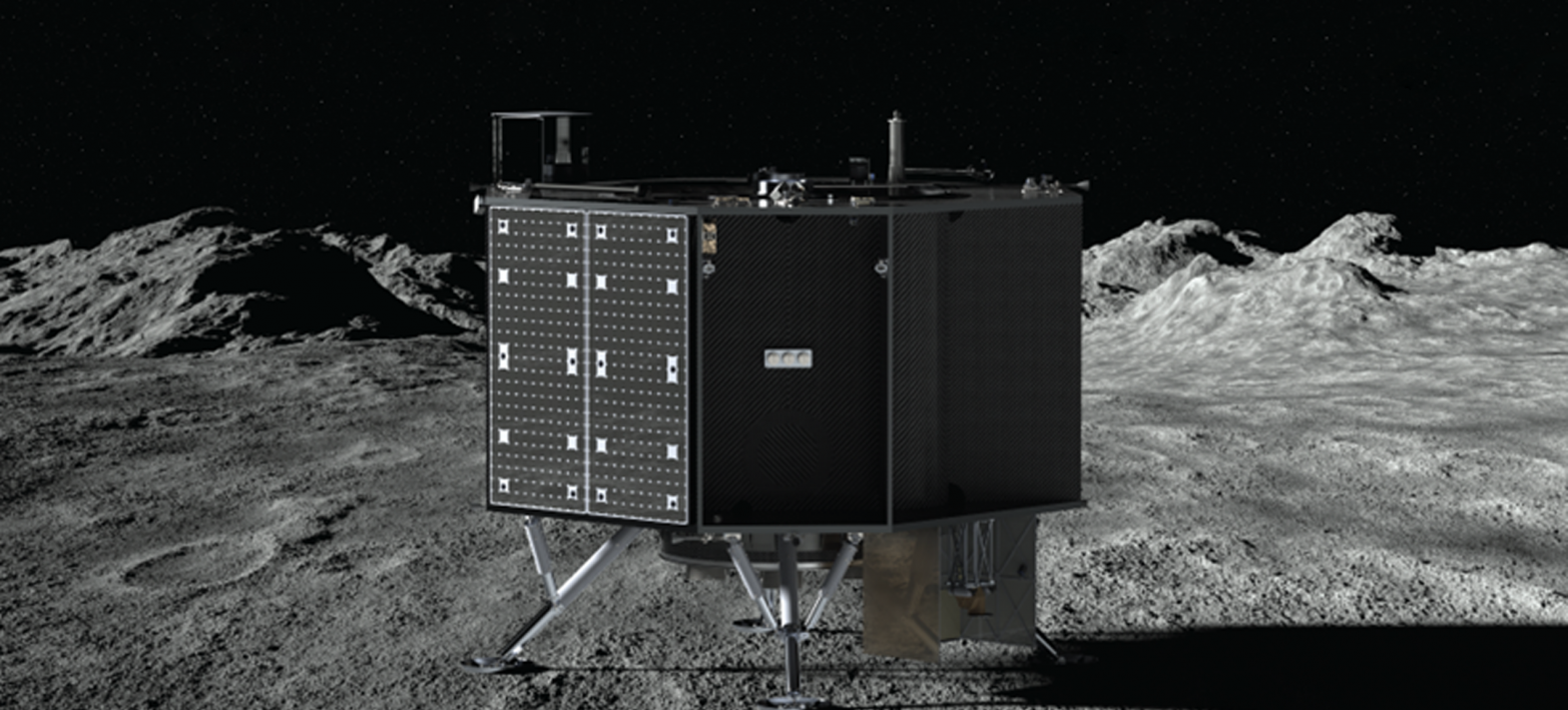The Farside Seismic Suite (FSS) project is designed to provide a stand-alone instrument for seismic measurements on the far side of the Moon. The FSS instrument was proposed by JPL (Jet Propulsion Laboratory, USA) to NASA in the Commercial Lunar Payload Services (CLPS) PRISM (Payloads and Research Investigations on the Surface of the Moon) tender, and was selected in 2021.
The first seismometer on the Moon since the Apollo missions (1972-1977), this instrument will measure earthquakes on the Moon’s surface, measure seismic attenuation in the deep lunar mantle, determine crustal thickness and stratification, and measure lunar microseismic noise thought to be associated with meteorite micro-impacts.
While the lander’s mission will last 14 Earth days, FSS will operate autonomously for 4 months at a landing site in Schrödinger crater, on the far side of the Moon, close to the South Pole.
FSS is a 40 kg cube equipped with its own power management, telecommunications and thermal regulation modules. At the heart of FSS are two types of seismometer, one of which is supplied by France, as shown below. In order to preserve the energy stored in the FSS batteries by its solar panels, the instrument will not transmit data during the lunar night. On the other hand, during the lunar day, it will communicate with an orbiter as soon as it comes into view of the latter. This orbiter will act as a relay between the ground stations and the FSS.
CNES and IPGP (Université Paris Cité/IPGP/CNRS) are participating in FSS with JPL, and will deliver one of the sensors for the spare model of the SEIS instrument (InSight 2018 mission), in particular a VBB (Very Broad Band) seismometer, developed by Sodern as part of the SEIS project. Working with EREMS, IPGP was able to improve the sensitivity of the VBB’s displacement sensor by a factor of 3, enabling it to detect ground displacements of the order of picometers (10-12 m) at one-second intervals. With the support of the Astroparticle and Cosmology Laboratory (CNRS/Université Paris Cité) and ISAE-Supaéro, they will also be participating in the development and integration of a JPL-funded accommodation box for the VBB, called SeismoBox.
Finally, the French team will play an important role in operations. JPL will receive the telemetry and send all the commands to FSS. CNES will analyze the data and prepare orders for the two seismometers onboard FSS (the VBB and the SPs), in the same way as it does for SEIS on InSight. The IPGP will be in charge of the scientific exploitation of the VBB and the analysis of lunar seismicity, and its data center will document and disseminate the data to the scientific community.
Gabriel Pont, FSS project manager at CNES, and Philippe Lognonné, scientific manager of the seismometer at IPGP, have already collaborated on the SEIS/InSight mission. They and their team are proud to be working together on this lunar mission. “Once again, this is an opportunity, through collaboration with JPL, one of our privileged partners, to demonstrate French excellence in the field of scientific instrumentation, and in particular seismology. The use of spare equipment from the SEIS program means we can carry out this collaboration while optimizing budgets,” says Gabriel Pont. “With FSS and the return of seismology to the Moon, we will better understand the deep structure of our satellite and how it has evolved since its formation, just over 4.5 billion years ago,” adds Philippe Lognonné, Professor at Université Paris Cité.








